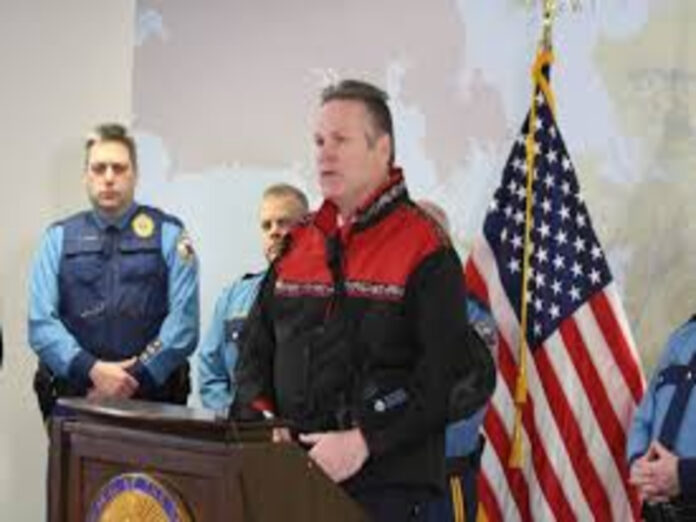A Once-Peaceful Shoreline Is Now A Wasteland Of Shattered Homes & Upturned Lives, As Nearly 2,000 Alaskans Remain Homeless
Monday, October 20, 2025, 8:30 A.M. ET. 3 Minute Read, By Jennifer Hodges: Englebrook Independent News,
ANCHORAGE, AK,- The tranquil shores of Alaska’s Yukon-Kuskokwim Delta were dramatically transformed last weekend when the remnants of Typhoon Halong slammed into the coast, surging homes into the sea, flooding entire villages and leaving nearly 2,000 residents homeless. State officials say many will be unable to return to their homes for at least 18 months, prompting Governor Mike Dunleavy to urgently appeal to the White House for a major disaster declaration.
In a letter to President Trump, Governor Dunleavy cited preliminary assessments showing catastrophic damage: in the village of Kipnuk, about 90 percent of the 121 homes were destroyed; in nearby Kwigillingok, more than one-third of residences are now uninhabitable after being swept off foundations or left irreparably damaged.
The storm struck with the force of a Category 2 hurricane, driving a storm surge more than six feet above normal high tide in low-lying coastal areas and devastating remote communities reachable only by air or water. Rescue crews raced to save dozens of residents, including some plucked from drifting homes, but at least one person died and two remain missing.
A Blow to Remote Communities;
The damage is especially acute in Alaska’s isolated Native villages, many of which rely on subsistence fishing and hunting, and whose infrastructure is fragile. In Kipnuk, residents described a surreal scene of homes floating away, boardwalks washed out, and debris carried miles inland. “Homes are tossed everywhere. It looks like a blast radius,” one official said.
With winter on the horizon, urgency mounts. Shelters filled rapidly in regional hubs, and evacuees began arriving in Anchorage, transported by the Alaska National Guard and the U.S. Coast Guard, one of the largest airlifts in state history.
Governor Dunleavy’s request seeks federal funds to unlock disaster-relief payouts, infrastructure rebuilding grants, and transitional housing support for displaced families. “This is not just a recovery, it is a reset for an entire way of life,” Dunleavy said.
Why Recovery May Take 18 Months;
State and federal engineers estimate reconstruction will stretch well into 2027. The reasons are stark: the remote locations are reachable only by air or boat; Alaska’s harsh winters limit the construction season to a few short months; and the cost of rebuilding on permafrost-threatened ground has soared.
Many leaders in the region warn that some coastal villages may never be re-established where they once stood. “We are fighting not just to rebuild, but to remain,” said one tribal council member.
Looking Ahead;
As the first snow of the season begins to fall, Alaska faces a defining test of resilience. Federal officials have yet to announce whether an emergency declaration will be granted, but the request underscores the urgency of the crisis.
For the thousands now displaced, the wait for word from Washington may determine whether they ever see home again.
Editor’s Note:
Reporting for this article draws on verified information from the Associated Press, The Guardian, The Washington Post, and the Alaska Beacon, as well as official statements from the Office of the Governor of Alaska and state emergency management briefings. Compiled, fact-checked, and edited for publication by Jennifer Hodges: Englebrook Independent News, L.L.P.

